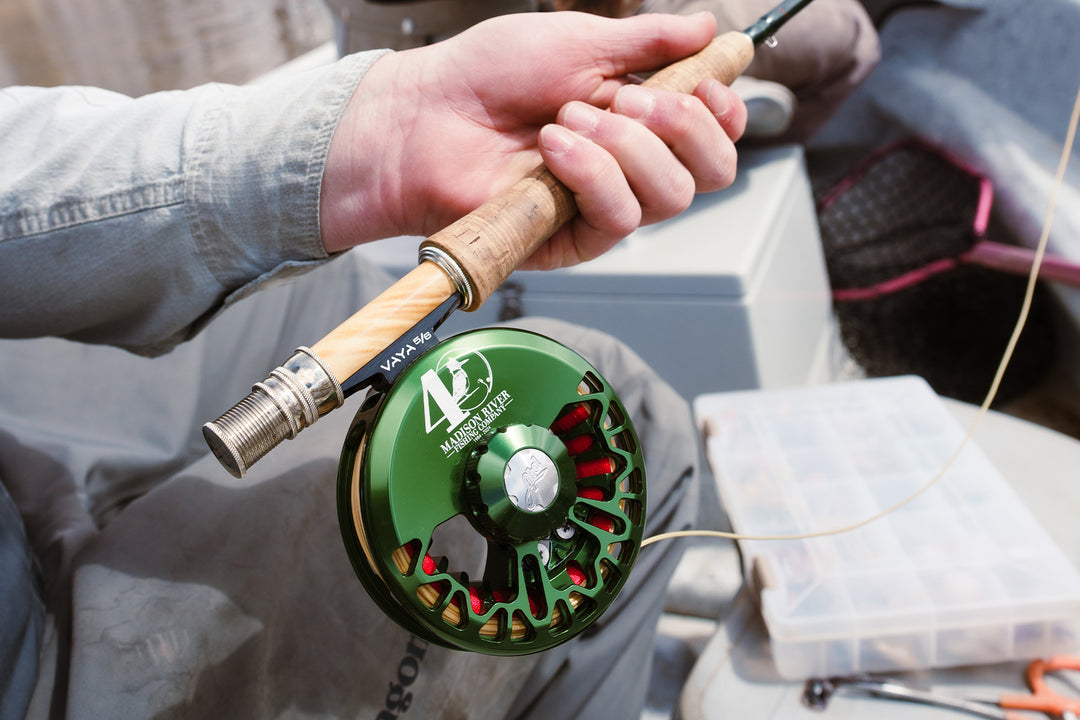Trout Spey: A Brief Overview

If the tug is the drug, then Trout Spey is Owsley Acid. A concoction of art, skill, and beauty, Trout Spey is everything the modern fly angler has grown to love about fly fishing combined with the never-ending pursuit to implement the perfect cast. Entering the world of Spey fishing can seem unnerving for most anglers, and for good reason. Common line weights are referred to purely by grain number, weight forward tapers are being exchanged for Skagit and Scandi heads, and to top it all off, there is a completely foreign mechanism for casting your fly line. Should you go the route of scouring forums on how to go forth with building your setup you’ll likely find the common adage, “It’s all personal preference!”. Well what good does personal preference do when you have no understanding of the subject at hand? With this in mind, let’s enter the world of two-handed fishing for trout.
A Trout Spey or Micro Spey rod is generally any two-handed rod between a 1 and 5 weight that is less than 12'. Now when an angler fishes a 1 weight two-handed rod, it is not comparable to a regular 1 weight single-handed rod. A common rule to keep in mind is to add 3. When fishing a 1 weight two-handed rod, it is similar to fishing a 4 weight singled-handed rod. Just add 3! Now let's dive into lines.
Before you choose to fish a Scandi or Skagit setup, you must first decide whether you want an integrated line or a shooting head system. There are pros and cons to both of these setups, but you might eventually prefer one over the other. An integrated line system connects the running line directly to the head of your fly line. The advantage to this system is that it is a completely smooth setup, there are no loop to loop connections that could potentially be caught in an eyelet while you’re fighting the fish of your dreams. The downside of this system is that you're only able to fish one line per spool, you would need to have another spool handy should you want to switch from a scandi setup to your skagit system.

Onto the shooting head system. Using a shooting head creates a more versatile setup that an angler can choose between. This setup starts with a shooting line that connects to the backing of the fly reel. The shooting line then has a loop to loop connection that can attach either a Scandi head or a Skagit head. The shooting head system is great for the angler that likes to switch their setup with ease without carrying around an extra spool on the water. This system is a great option for the angler looking to get started with both techniques of Scandi and Skagit.
Now what the heck is a Scandi system vs. a Skagit system? The simplest way I like to think of it is as follows: Scandi is equal to soft hackles while Skagit is equal to streamers. Now once you get into the world of steelhead or atlantic salmon this rule becomes less black and white, but for the sake of Trout Spey this should generally hold true. Scandi heads are comparable to China Doll live at Winterland on 11/11/73. There’s a certain delicacy and ease of motion that follows the casting of a Scandi line, it’s pure presentation that causes you to Ooh and Aah as your line lays gracefully across the water. A Skagit head on the other hand is like raw heavy metal, think S.O.A.D.’s Toxicity. Casting a Skagit setup makes you feel like kicking ass and taking names, there’s nothing dainty about it. Your streamer makes contact with the water like Sheldon Brown on Reggie Bush back in the ‘06 NFC divisional playoff game. Boom!

With a Scandi system, you can use a standard 7.5’ or 9’ leader to fish soft hackles. Here on the Madison, I’ll flirt with anything between a 3x and 5x leader for my Scandi setup. In a Skagit head system, a sinking tip is attached to the end of the Skagit head. The names of these sinking tips vary by brand, (i.e. Polyleader, versileader, sonar leader, etc…). A Skagit system is not complete without a sinking tip. The rate at which the tip sinks is determined by IPS (Inches Per Second). For example, a RIO 5’ Intermediate IMOW Tip would have 5’ of an intermediate sink rate with the other 5’ being 7” per second. A 2.5’ Intermediate IMOW Tip would have 2.5’ of an intermediate sink rate with the other 7.5’ being 7” per second. The sinking tips are switched out as you approach different buckets that have various depths. At the end of the sinking tip, you can attach 2’ - 4’ of fluorocarbon and then tie on your streamer of choice.
To further break down the Scandi head system, your setup will look like this from the reel forward:
Backing -> Running Line -> Scandi Head -> Leader -> Soft Hackle or fly of choice.
Skagit head system from the reel forward:
Backing -> Running Line -> Skagit Head -> Sinking Tip -> Fluorocarbon Leader -> Streamer of choice.

Fishing with a Trout Spey setup allows you to tackle water in a brand new manner. Water that was once out of reach can now be completely covered with a few good swings. Not only does Trout Spey give you another method to implement on the river, it also allows you to rediscover the water that you’re already intimately familiar with. You might find yourself joyfully surprised to learn that fish are in fact holding in that section of river that you always walk past. I’m guilty of this too! Fishing with a two-handed rod is an opportunity to dive further into our sport that is ever-evolving.
Check out our Trout Spey Page for specific gear that is tailored to this style of fishing. Have a question? Feel free to call the shop at (406) 682-4293 to talk all things Trout Spey!
By Danny Eiden
Danny grew up fishing the Driftless region of Wisconsin focusing on warmwater species, tricking bass, northern pike and muskies with big streamers and poppers. A recent college graduate, Danny finds himself tying a lot of flies and working on navigating his new territory around the Madison Valley while contributing to the MRFC blog.























Thank you a detailed explanation of differences, advantages, etc
Nice Dead references!
Leave a comment